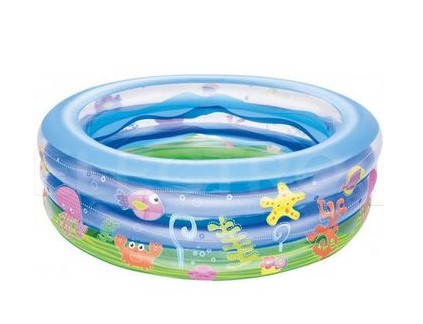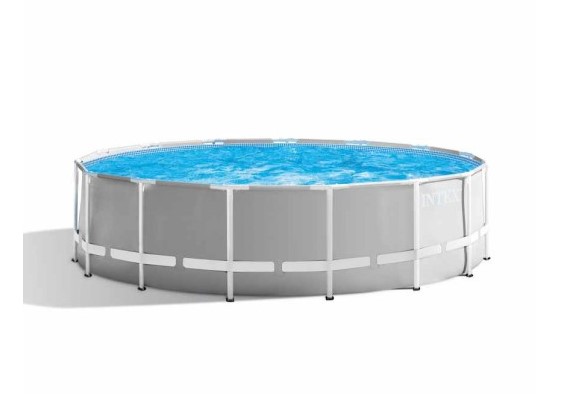How to repair a cracked pool yourself?

It's getting warmer outside and the fashion for garden swimming pools, which came from Western countries, has also settled in Poland for good. Using the pools is very pleasant until there is a hole or a crack.
We will crack the garden pool is the bane of all people, especially parents, who must repair such an element as quickly and simply as possible. Pool repair doesn't have to be difficult. So let's take a closer look at this topic.
There are many pools on the market made of thicker or thinner PWC (PVC) foil. Sometimes some of them can be reinforced with an additional layer of glass fiber.
Below we present 2 products most often used to repair the pool yourself:
- ATK FIX for minor repairs of small pools, toys and the so-called inflatables
- ATK 812 for larger defects, on the weld, irregular surfaces to be used with a patch.
What garden pools can we repair?
a) traditional, inflatable pools - usually thin, intended for small children, made of soft PVC.

b) expansion pools - take up little space, entirely made of PVC, usually have a special flange,

c) racked pools - the most popular and definitely the most resistant to damage, with a durable structure (usually several layers of PVC), with a support frame made of plastic pipes - less often metal ones, requiring a larger area,

c) concrete pools - also popular recently in Polish gardens. The most important thing is that the foil of such a pool should be made of PVC.
How to seal the bottom of the pool?
We seal the bottom of the pool, just like the walls and sides, by sticking a patch with the glue applied - but you have to remember about a very important thing. After pressing the batten, apply pressure for about 1-3 hours of initial joining so that the water pressure does not tear it off during this time. The pressure can be applied by using a weight or constipation with a board with a pad in its entirety (of course, remember not to make another hole) and what has already been mentioned, it is obligatory to rub the surface with sandpaper to remove dirt and tarnish on the bottom surface.
How to find out where is the hole in the pool?
The easiest method for inflatable pools is to find out where the air bubbles are appearing; if they are expansion pools, it is quite easy to see where the water is escaping. The most difficult task is, if we have a small abrasion or a cut in the dug pools, then the leakage check in the places of the weld is checked, e.g. with a hook or a screwdriver, applying light pressure. If we find a break, mark it immediately and keep checking. It may turn out that this is not the only damage. In the case of abrasions, unfortunately, you need to visually check the entire surface - although there is one more way: if we are just filling or changing the water, then we do it in stages and fill only enough to cover the bottom + a few centimeters and wait if there is a loss of water. We repeat this, for example, with a water height of 10-20 cm. When there is a drop at some point - we only have to check the last "portions" of the amount of water. Obviously, this is a time-consuming method.
What kind of glue to repair PVC pools?
So if you have any of the above pools, you can reach for a specialist kit for repairing pools with ATK MS 812 adhesive. Use this glue if you have large, large-area cavities and when you need to glue the elements without draining the water (we will deal with this topic in a moment). If you have a problem with the selection of an adhesive for pool repair, you can contact us at any time. You will get the patches for gluing the pool in the set.
Jhow to glue a hole in a pool or collar?
Bonding the pool does not have to be difficult. You can repair such a pool yourself at home and you do not need any specialized tools. For the repair of soft and flexible PVC, an alcohol-based degreaser is included, with which we clean the plastic of unnecessary contamination before the gluing process itself. It is enough to take scissors, cut the patch purchased in the kit to the defect we have, degrease and stick it. The exception may be pools made of TPO material, which will require the use of a more specialized agent, the so-called "primer" which we have to use before applying the patch. You can also purchase spare pool patches.
Adhesive for the swimming pool under water (e.g. with a hole in the bottom)
What about when we have a large pool and huge amounts of water are drained from repair? Of course, there is no such necessity. Using the ATK MS 812 pool adhesive, we can glue under water without any worries. You can glue the pool wet without any problem. We covered a detailed discussion of this topic in another blog post: "Gluing under water". It is also especially useful when there is a hole in the bottom of the pool.
We made an attempt at such gluing in our video on YouTube.
Why do not we glue with silicone?
For two simple reasons. First of all, silicones stick very poorly to plastics, especially PVC, and while the initial effect is satisfactory, it falls off spontaneously after a few weeks. Of course, if we manage to buy good silicone (not in a DIY store - we will not find them there), there is one more important issue. The strength of the silicone is very low. We are talking here about only 0.5-1 Mpa in the best case - ATK 812 withstands 4-8 times more, i.e. 4Mpa.
Polyester pool repair? that is, rigid pools and ponds.
If it is an underwater repair, we can also use ATK 812 with a piece of polyester or even metal as a patch. However, ultimately, after draining the water, it is better to use Acralock SA 10-15 and chamfer and fill in not large gaps or glue a patch to strengthen a larger piece. If the wall allows you to lightly select the material, so that there is an even level after pressing, you can also do this.
How to check where the air is escaping from the pool?
The easiest and fastest way is to find out where the air bubbles are appearing; if it is not on the water side, lightly moisten the pieces with water or soapy hand until damage is found.
How to find a hole in a garden pool? - a list of ways
1. Hearing method - the most popular and performed first.
2. Soapy water - use soap and water and rub in looking for air bubbles.
3. Put it in the water - inflate it beforehand and, applying pressure, look for bubbles with a hole.
![]()

Comments